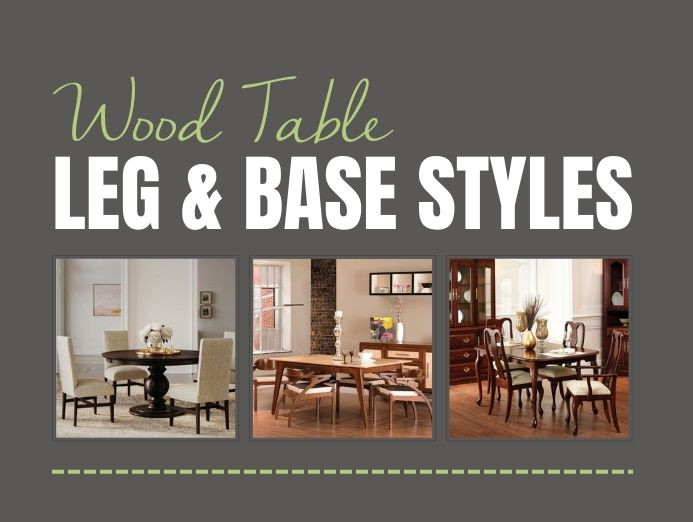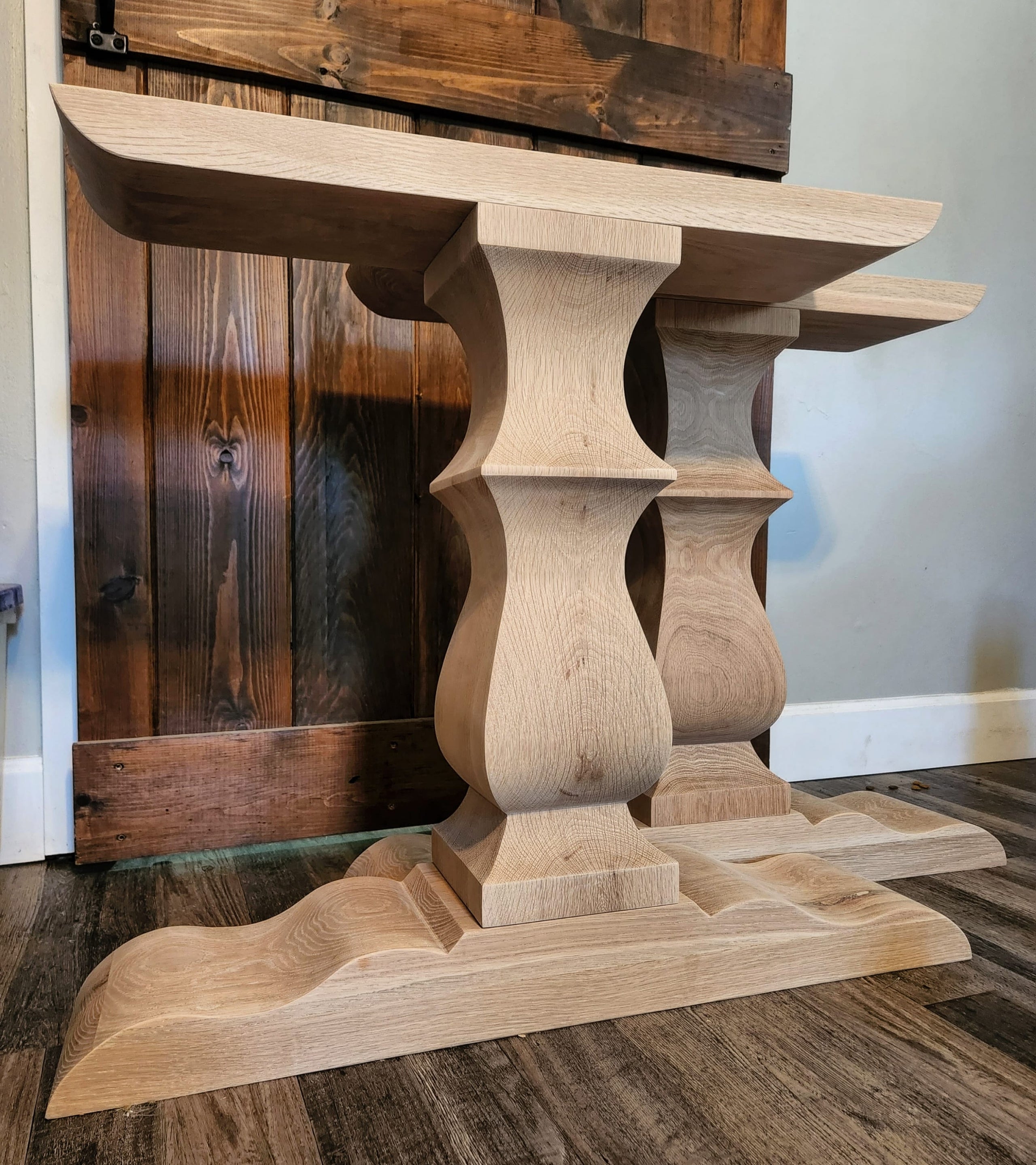Tips for Installing Dining Room Table Legs for a Modern Look
Tips for Installing Dining Room Table Legs for a Modern Look
Blog Article
From Traditional to Modern: Locate the Perfect Dining Room Table Legs for Your Style
The choice of dining-room table legs plays an essential duty in specifying the total personality of your area, bridging the space in between traditional workmanship and modern looks. While traditional designs such as cabriole and transformed legs stimulate a sense of ageless elegance, contemporary styles like hairpin and geometric alternatives offer an opportunity for striking aesthetic interest. Evaluating the ideal balance between these styles requires a nuanced understanding of your existing design and individual taste. As you consider these aspects, the question remains: exactly how can you effortlessly integrate these varied leg designs to develop a harmonious dining experience?
Recognizing Table Leg Styles
The variety of dining-room table leg designs can dramatically affect both the aesthetics and functionality of the area. Each leg design contributes special practical attributes and aesthetic components, satisfying varied style preferences and usage requirements. Recognizing these styles is crucial for picking the best dining table that aligns with your general interior decoration vision.
For example, conical legs supply a tidy, traditional appearance that can improve a room's sophistication, while pedestal bases offer stability and make the most of legroom, making them perfect for smaller areas. Hairpin legs, a hallmark of mid-century contemporary style, present a commercial panache, enabling a ventilated, open feeling. Similarly, trestle legs evoke rustic appeal, giving robust support and a feeling of eternity.
Furthermore, the choice of products plays a substantial role. Wood legs can bring warmth and appearance, whereas steel options often convey a sleek, modern ambiance. Inevitably, understanding table leg styles is vital for creating a cohesive eating area that reflects individual style while making certain functionality and convenience. By thoughtfully considering these components, you can enhance both the aesthetic and practical appeal of your eating room.
Conventional Table Leg Options
When choosing eating area table legs, typical choices often embody timeless elegance and workmanship. These layouts reflect a rich heritage and a commitment to quality, making them ideal for those who appreciate classic aesthetics.
Among one of the most legendary traditional leg styles is the cabriole leg, defined by its graceful bent form. This style frequently features attractive carvings and is most frequently located in Queen Anne and Chippendale furnishings. Another popular option is the turned leg, which boasts a collection of smooth, rounded shapes that supply a traditional look while maintaining security.
In addition, the straight leg, while simple, uses a tough and basic framework that can mix perfectly with a selection of tabletop designs. For those attracted to ornate describing, claw-and-ball feet legs stimulate a sense of grandeur and can act as a magnificent centerpiece in any eating area.
Lastly, stand bases, although not strictly legs, offer a different traditional alternative that permits for adequate legroom and can be wonderfully sculpted. Each of these typical leg styles adds to the overall atmosphere of a dining area, weding feature with aesthetic allure.

Modern Table Leg Designs
Modern table leg styles provide a diverse variety of designs that stress ingenious products and clean lines. These designs usually focus on functionality while functioning as striking prime focus within a dining space. Minimalist visual appeals prevail, with legs crafted from products such as metal, glass, and engineered wood, which contribute to a modern and airy feeling.
One prominent layout is the hairpin leg, identified by its slender, conical structure that supplies stability without overwhelming the table top (dining room table legs). This design is commonly located in mid-century modern-day furnishings and can effortlessly complement various eating table shapes. One more pattern is making use of geometric shapes, where legs may take on angular or asymmetrical types, including visual rate of interest and a touch of artistry

Mixing Styles for Unique Rooms
Often, homeowners seek to create unique dining areas that show their personal design by mixing various design aspects. This technique enables the incorporation of varied visual appeals, resulting in an unified yet distinctive setting. Pairing a rustic wood table with streamlined, modern steel legs can develop an appealing comparison that elevates the space's general charm.
Additionally, incorporating vintage table legs with contemporary tabletops can stimulate a sense of background while keeping a modern-day perceptiveness. Such combinations not just showcase private preference however additionally his comment is here motivate imagination, allowing property owners to curate an area that feels both personal and welcoming.
Color plays a critical function in this mixing process; selecting table legs that match or comparison with the existing shade system can boost aesthetic interest. For instance, whitewashed legs can soften the daring of a dark table surface, developing a balanced aesthetic.
Tips for Picking the Right Legs
Choosing the right table legs is crucial for achieving both capability and visual appeal in your eating space. Begin by taking into consideration the general style of your area. Traditional setups profit from legs that include complex carvings or transformed layouts, while modern spaces might call for sleek, minimal designs.
Next, assess the elevation and stability of the legs. dining room table legs. Conventional dining tables range in between 28 to 30 inches in elevation, so ensure the legs match this measurement for convenience. In addition, robust products, such as wood or metal, can boost security and long life
Assess the leg form also-- choices consist of straight, tapered, or stand layouts. Straight legs offer a classic look, while conical legs can include a touch of elegance. Pedestal bases give enough legroom and are excellent for smaller spaces.
Verdict
In recap, selecting the ideal dining space table legs calls for mindful factor to consider of both traditional and modern styles. By integrating leg design, height, and material with see this site the overall design, a cohesive and inviting atmosphere can be achieved.
The selection of dining area table leg styles can considerably influence both the appearances and performance of the area. Inevitably, understanding table leg designs is essential for developing a cohesive dining area that reflects personal design while making sure usefulness and convenience.One of the most renowned conventional leg styles is the cabriole leg, identified by its stylish bent shape. Straight legs offer a timeless look, while tapered legs can add a touch of beauty.In summary, picking the excellent eating space table legs calls for careful consideration of both standard and modern styles.
Report this page